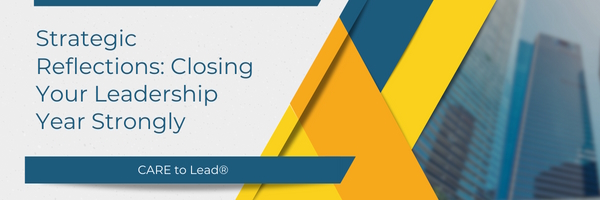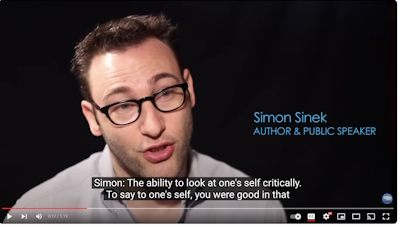Leading without year-end reflection is like steering a Fortune 500 company without a business strategy. It’s not just risky; it’s counterintuitive to the principles of effective leadership.
As you read this, you might feel the familiar weight of the year’s end – the goals that remained just out of reach, the initiatives that didn’t quite deliver, and the tough decisions that didn’t pan out as expected. This discomfort is more than normal; it’s all part of leadership.
However, reflection matters, so I’m here to guide you through the nuanced art of year-end reflection. This practice isn’t simply a retrospective look; it’s a strategic tool for proactive leadership and insightful planning. It’s where you find the hidden lessons that become the foundation of next year’s successes.
Reflection is a powerful exercise for achieving clarity, enhancing decision-making, and formulating insightful strategies. It transforms challenges into opportunities and lessons into actionable plans. By reflecting, you’re not just revisiting the past but shaping the future.
Unfortunately, many leaders sidestep this invaluable practice. Why?
Consumed by Immediate Priorities
Because, in the whirlwind of daily operations and immediate crises, leaders often lose sight of the big picture, neglecting the need for reflection.
This is compounded by several other factors:
- >> Lack of a Structured Approach: Many leaders feel lost in reflection without a clear methodology. Put simply, they don’t know how to do it.
- >> Reluctance to Face Uncomfortable Truths: It’s human nature to shy away from our shortcomings, but in leadership, confronting these truths is key to growth.
- >> Underestimation of Reflection’s Impact: Some leaders fail to recognize how reflection can significantly influence their strategic vision and personal growth.
- >> End-of-Year Time Crunch: The busy close of the fiscal year often leaves little room for what might seem like a luxury – but is, in fact, a necessity.
The good news is these hurdles aren’t insurmountable. I’ll show you how to leverage year-end reflection as a fundamental tool in your leadership toolkit.
Step 1: Schedule Dedicated Reflection Time
This is about prioritizing your leadership development as you would a critical business meeting.
Effective reflection demands uninterrupted, focused thought. It’s the time to comprehensively review the year’s objectives, accomplishments, setbacks, and lessons learned. Consider how seasoned leaders utilize this period not just for introspection but as a strategic session to recalibrate and refine their approach.
- Action Item: Block out at least two hours in your calendar, just as you would for an important meeting. Treat this time as non-negotiable and free from interruptions.
- Further Action: Choose a location where you feel comfortable and undisturbed, whether it’s your office, a quiet café, or a serene outdoor space.
Step 2: Adopt a Structured Reflection Framework
Navigating reflection without a plan can be challenging. Try to utilize frameworks like SWOT or OKRs (Objectives and Key Results) to organize your thoughts and insights.
A structured approach simplifies the reflection process, ensuring a holistic review of both your personal leadership journey and your organization’s performance. It’s about transforming a seemingly complex task into a clear, manageable process.
- Action Item: Utilize the SWOT analysis framework. Create four sections on a sheet of paper or a digital document: Strengths, Weaknesses, Opportunities, and Threats.
- Further Action: For each section, list at least three items from the past year. Be honest and comprehensive. Include feedback from peers, subordinates, and your self-assessment.
Step 3: Convert Reflections into Strategic Actions
The transformative power of reflection is realized when insights lead to action.
At this juncture, armed with a deeper understanding and clarity, it’s time to formulate SMART goals and strategies for the upcoming year. This step is about aligning your reflections with actionable, strategic plans that propel both you and your organization forward.
- Action Item: From your SWOT analysis, identify at least one key area for improvement and one key opportunity to pursue in the upcoming year.
- Further Action: Develop specific, measurable goals for these areas. For instance, if a weakness was communication within teams, set a goal to implement monthly team meetings or communication training sessions.
- Bonus Action: Tell your coach about the goals you’ve set for yourself based on your year-end reflection.
Now, you’ve explored the critical role of year-end reflection in leadership, identified common barriers, and discovered a practical approach to turn these reflections into a roadmap for future success. This process is a strategic exercise in shaping your leadership narrative and driving your organization’s future triumphs. You’ve got this!


